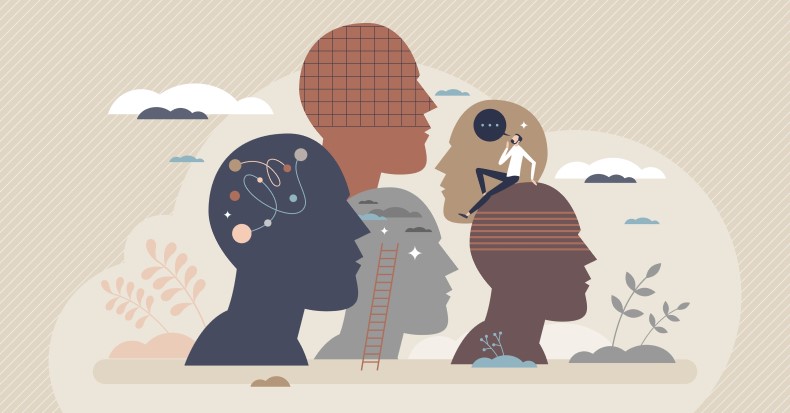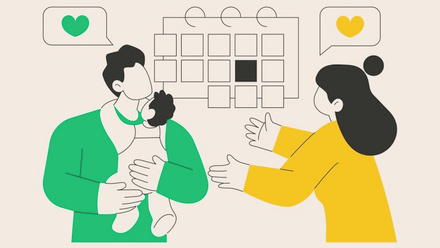How benefits can be neurodiverse by design
We are all proud owners of diverse and different brains with our own ways of processing emotions, approaching tasks and responding to a whole range of stimuli. Every person has strengths and weaknesses, but for neurodivergent people, those strengths and weaknesses are more pronounced.
An estimated 15 to 20% of people have diagnosed conditions that recognise alternative neurocognitive abilities, relating to differences in the way they relate to emotions, mood, learning and attention.
What conditions are described as neurodiverse?
While not an exhaustive list, here are some of the conditions considered neurodivergent. It is worth noting that many conditions co-exist, for example, an autistic person could also have dyslexia and/or ADHD.
- ADHD
- Autism
- Dyslexia
- Dyspraxia
- Dyscalculia
- Dysgraphia
- Dysnomia
- Meares-Irlen Syndrome
- Hyperlexia
- Obsessive Compulsive Disorder (OCD)
- Synesthesia
- Tourette’s syndrome.
Neurodiversity in the workplace
Culturally, the workplace has not always been a sanctuary for neurodiverse colleagues, and the acceptance of these differences and their advantages in the workplace has been slow to progress. Figures from The Institute of Leadership and Management found that half (50%) of managers admitted they would feel “uncomfortable” hiring a neurodiverse person. And official data from the Office for National Statistics in 2021 found that just one in five (22%) autistic people in the UK are in any form of employment, suggesting recruitment prospects are not wholly positive for those who disclose.
Dr Nancy Doyle, founder of Genius Within, a social enterprise that helps neurodivergent people achieve their potential in work and education, says neurodivergent employees need specific types of support. “The kind of support they need isn’t necessarily given in the normal run of things,” she says, adding that biases in the workplace and the education system have contributed to low employment rates.
“The way work and hiring processes are structured means there is a systematic bias that excludes neurodivergent thinkers. A lot of neurodivergent people come into adulthood already feeling they don’t have anything to offer or they don’t have skills an employer would value, so they are often lacking in self esteem and social confidence.”
Awareness of neurodivergence at work is growing, however, although Dan Harris, chief executive of Neurodiversity in Business (NiB) says, “from an HR perspective, neurodiversity has sat in the ‘too hard to deal with’ bracket for a long time”.
“We've made great strides in other areas of diversity. What we haven’t done well is make sure we’re building neuro-inclusive workplaces at the design stage,” he says, adding that organisations are starting to realise that neurodiversity isn’t as “different or complicated” as they originally thought.
Our article on the evolution of employee benefits to better support neurodiversity goes into more detail about how practitioners can design a supportive strategy. However some of the key points for HR and benefits design to consider are diagnosis, supplier expertise and inclusivity of support.
Diagnosis
“The NHS is really under-resourced when it comes to diagnosis,” says Nicola Roche, senior international benefits consultant and UK neurodiversity lead at Siemens. “Historically, private medical insurance wouldn’t support this, but I am seeing that starting to change.” She adds that insurers are beginning to remove treatment exclusions for neurodiverse people. “In the past, neurodiverse people, especially those with autism or ADHD, were excluded from mental health treatment because it was seen to be a comorbidity and an increased risk for the insurers,” she says.
Doyle also advocates for having diagnosis as a benefit, because organisations may already have a high number of “undiagnosed or undisclosed” employees. “Diagnostic support does happen, but we find it comes through occupational health rather than through PMI. But private health providers need to start funding this, because it’s a significant additional cost, and we’ve got so much better at recognising neurodiversity.”
She also warns that the support shouldn’t stop with a diagnosis. “There’s a psychological shift that happens when you get a diagnosis and it usually involves the individual reconciling with historically giving themselves a hard time for things they have not been able to do.
“It can be like a grieving process. You go through vindication, but can also encounter a lot of anger at the way you were treated, or how life might have been different if you’d known 20 years ago. That can create a mental health backlash for individuals. My advice to employers is to bear that in mind: if you’re going to fund diagnosis you also need to fund some kind of wrap-around support.”
Supplier expertise
Providing a benefit that supports diagnosis is only half the battle, according to Roche, who also says it’s an organisation’s responsibility to ensure the provider they select has sufficient knowledge, expertise of neurodiversity and that the product is fit for purpose.
“If the provider doesn’t understand enough about how the underlying [neurodiverse] condition can influence mental health, the treatment they give could be inappropriate,” she says.
Roche says employers can push for change. “You can lobby suppliers, as an employer who recognises there is a particular need for a group of employees and you want the provider’s help to meet that need.
“If you’re lucky enough to have the [diversity, equity and inclusivity] expertise internally, you can offer yourself as a sounding board, which is what Siemens have done.” This allows the company to test and comment on solutions before it selects a provider.
Inclusive by design
Another way to gauge how inclusive your providers are of neurodiverse issues is to check that their staff are “representative of society”, says Roche.
“This way you can be sure that the solutions they offer reflect society and take into account all the different needs of different categories of people,” she says. “For example, does your EAP have someone on the helpline or counselling side who understands neurodiversity or is themselves neurodiverse?”
According to Andrew Kinder, vice chair of The Employee Assistance Professionals Association (EAPA), an EAP service is well prepared to help with neurodiverse issues, and is capable of providing bespoke support. “A key point of EAP is we assess the needs of the individual,” says Kinder. “We would identify what’s really going to help and then match them to the right therapist. So, for example, some EAPs I’ve been involved in will try and find a counsellor [with the same neurodiversity].” He adds that many experienced neurotypical counsellors will also be able to adapt accordingly.
Creating a workplace that supports neurodiverse employees requires different thinking from employers, but is far from impossible. Employee networks, supplier expertise, combined with new thinking about work patterns and workplace design, are all essential elements.
Read the first article on this topic: The evolution of employee benefits to better support neurodiversity.







